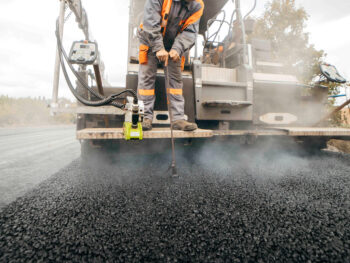‘Green shoots’ as road surfacing levels rise amid pothole pandemic
A rise in road surface dressing volumes for the first time in 12 years marks “green shoots of recovery” for the UK’s pothole-ridden roads.

The upturn is still significantly below the typical volume of surface dressing used prior to the downturn over the last 12 years
The Road Emulsion Association (REA) has reported an increase in the manufacturing, sale and use of bitumen emulsions for surface dressing since last year, which was the lowest reported volumes on record.
Around 38.5 million m2 of surface dressing was applied over the surface treatments season in 2024, according to latest information from the REA, which represents all the UK bitumen emulsion manufacturers.
The volumes used during the surface dressing season for 2024 are 9% higher than those recorded over the same period in 2023, when the REA reported the lowest amount of bitumen emulsion sold since records began in 1978.
The REA said the figures signify green shoots of recovery but warned the upturn is still significantly below the typical volume of surface dressing used prior to the downturn over the last 12 years.
It’s also said that the reduced bitumen emulsion volumes and reduction in surface dressing carried out by local highway authorities has, in its view, contributed considerably to the increase in potholes across the local road network.
Kevin Maw, REA consultant and secretary said: “This is positive news for the highways industry and road users. While we have a long way to go to get back to the volumes of bitumen emulsions produced in the years up to 2012 to enable +60 million m2 per annum of surface dressing, this shows that the trend has started to turn, which is encouraging.
“We hope this continues. It could be a sign of market recovery and a change in the focus amongst local highway authorities who are investing more in preventative maintenance, which is what we have been calling for as part of our campaign, Futureproofing our local roads.”
Chris Green, head of highway operations at Leicestershire County Council, said: “I’m encouraged that more local authorities are adopting and increasing their application of sustainable, low-carbon preventative maintenance treatments such as surface dressing. It’s the most cost-effective way for local authorities to maintain roads, prevent potholes, improve safety and keep roads moving.”
RAC head of policy Simon Williams: “We hope the preventative road maintenance tide has well and truly turned as last year’s surface dressing figure dipped to a 12-year low. The fact so little surface dressing was carried out last year helps explain why drivers are so angry and frustrated with potholes, something we’ve seen very clearly seen in research for this year’s RAC Report on Motoring with 56% of drivers listing the poor state of local roads as their number one motoring concern.”
Williams added that the rise in roads surface dressing should prevent thousands of potholes appearing.
“Surface dressing seals roads from the damaging ingress of water, extending their lives by preventing potholes appearing in the first place. Positively, we’ve also noticed the Government heeding our call for councils to do more preventative maintenance. We believe greater use of surface dressing and other preventative maintenance treatments can finally bring an end to the degradation of our much-relied-on local roads.”













